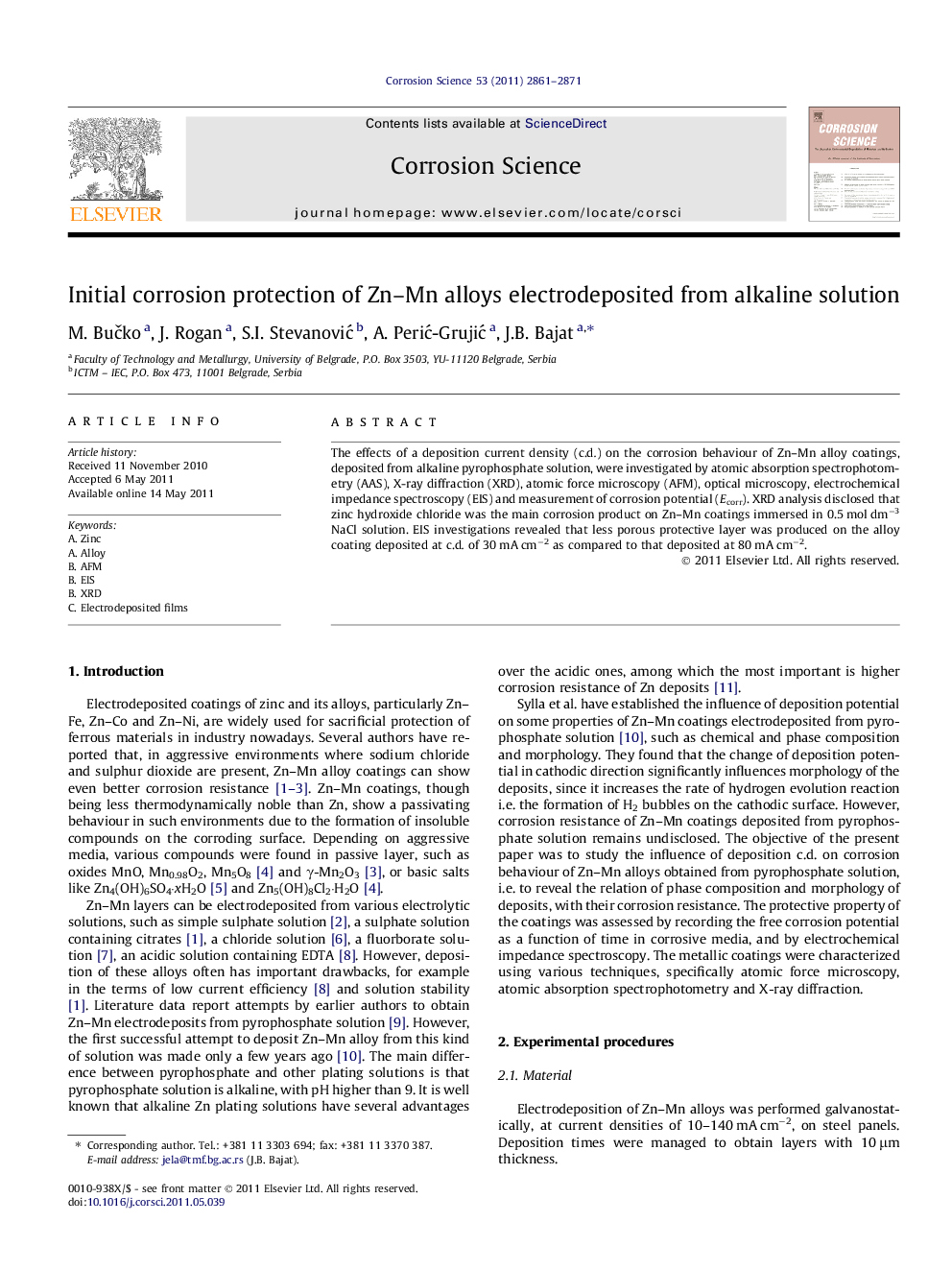| Article ID | Journal | Published Year | Pages | File Type |
|---|---|---|---|---|
| 1469968 | Corrosion Science | 2011 | 11 Pages |
The effects of a deposition current density (c.d.) on the corrosion behaviour of Zn–Mn alloy coatings, deposited from alkaline pyrophosphate solution, were investigated by atomic absorption spectrophotometry (AAS), X-ray diffraction (XRD), atomic force microscopy (AFM), optical microscopy, electrochemical impedance spectroscopy (EIS) and measurement of corrosion potential (Ecorr). XRD analysis disclosed that zinc hydroxide chloride was the main corrosion product on Zn–Mn coatings immersed in 0.5 mol dm−3 NaCl solution. EIS investigations revealed that less porous protective layer was produced on the alloy coating deposited at c.d. of 30 mA cm−2 as compared to that deposited at 80 mA cm−2.
► Corrosion of Zn–Mn alloys deposited from alkaline solution was examined for the first time. ► Deposits are mixture of η- and ε-ZnMn phases. The increase in deposition current density increases ε-phase content. ► Corrosion product on Zn–Mn alloys in NaCl solution is Zn5(OH)8Cl2·H2O. ► Coating deposited at higher current density has lower corrosion stability due to more porous surface film. ► Cavities and discrete large clusters in deposit, result in non-compact passive layer.
